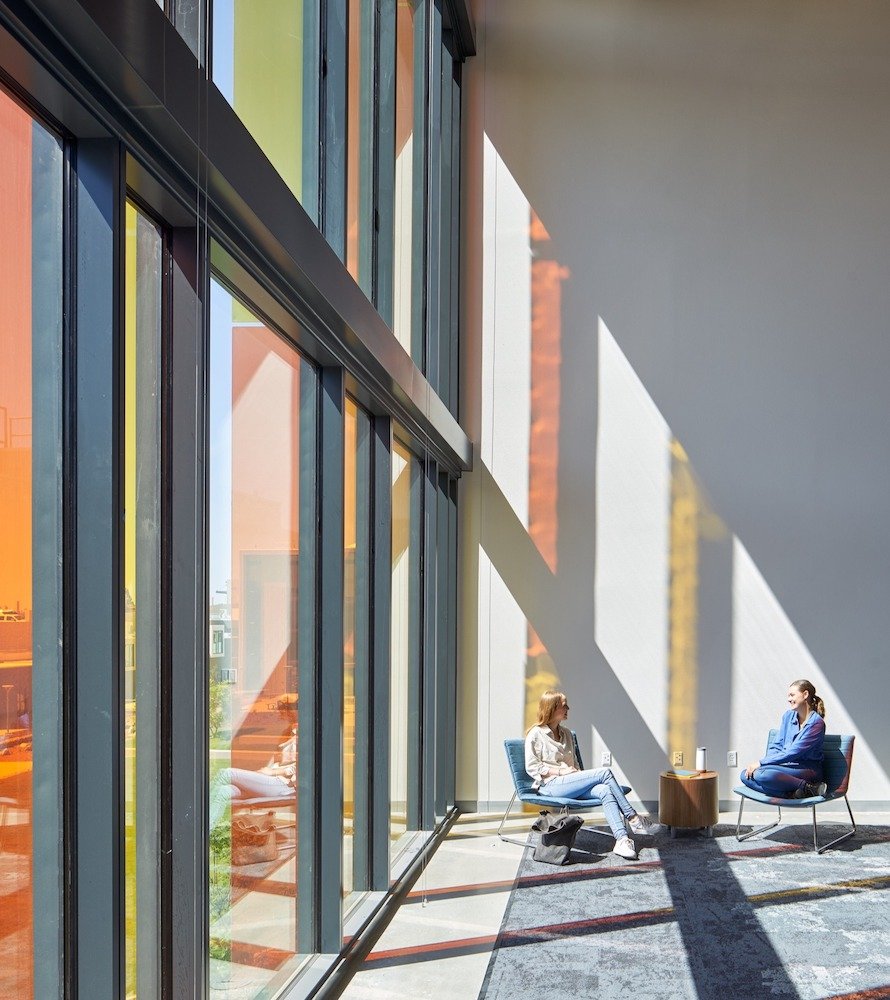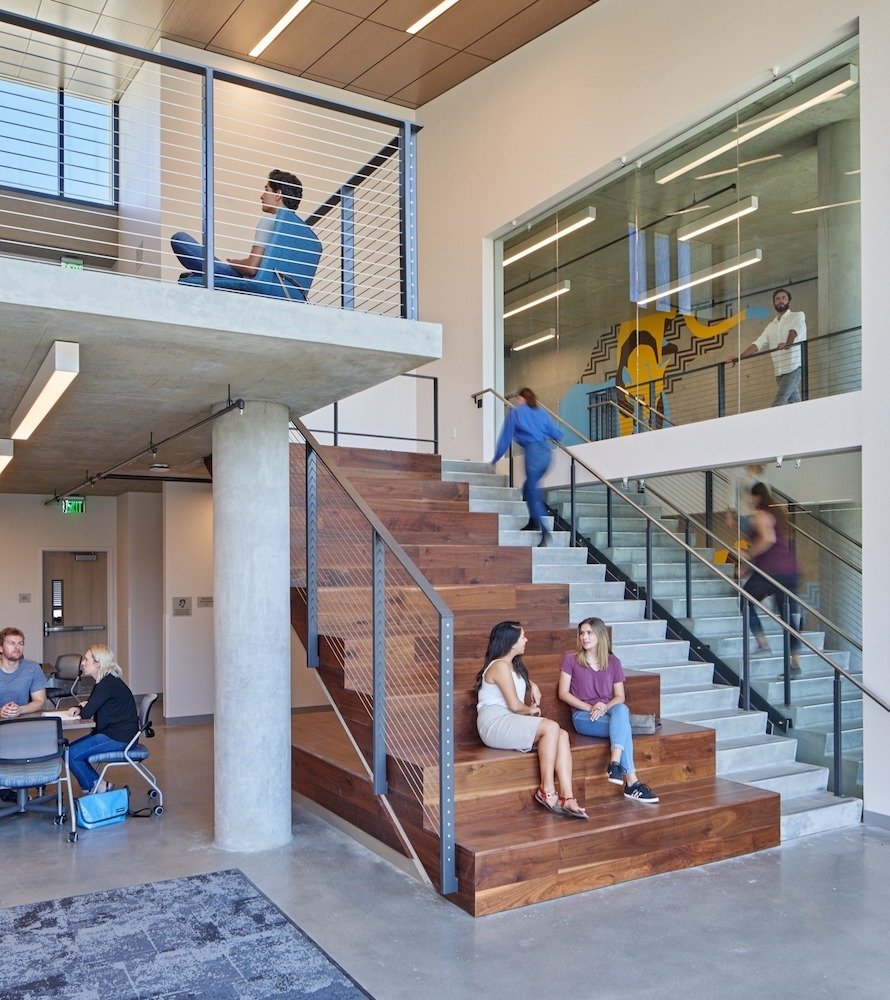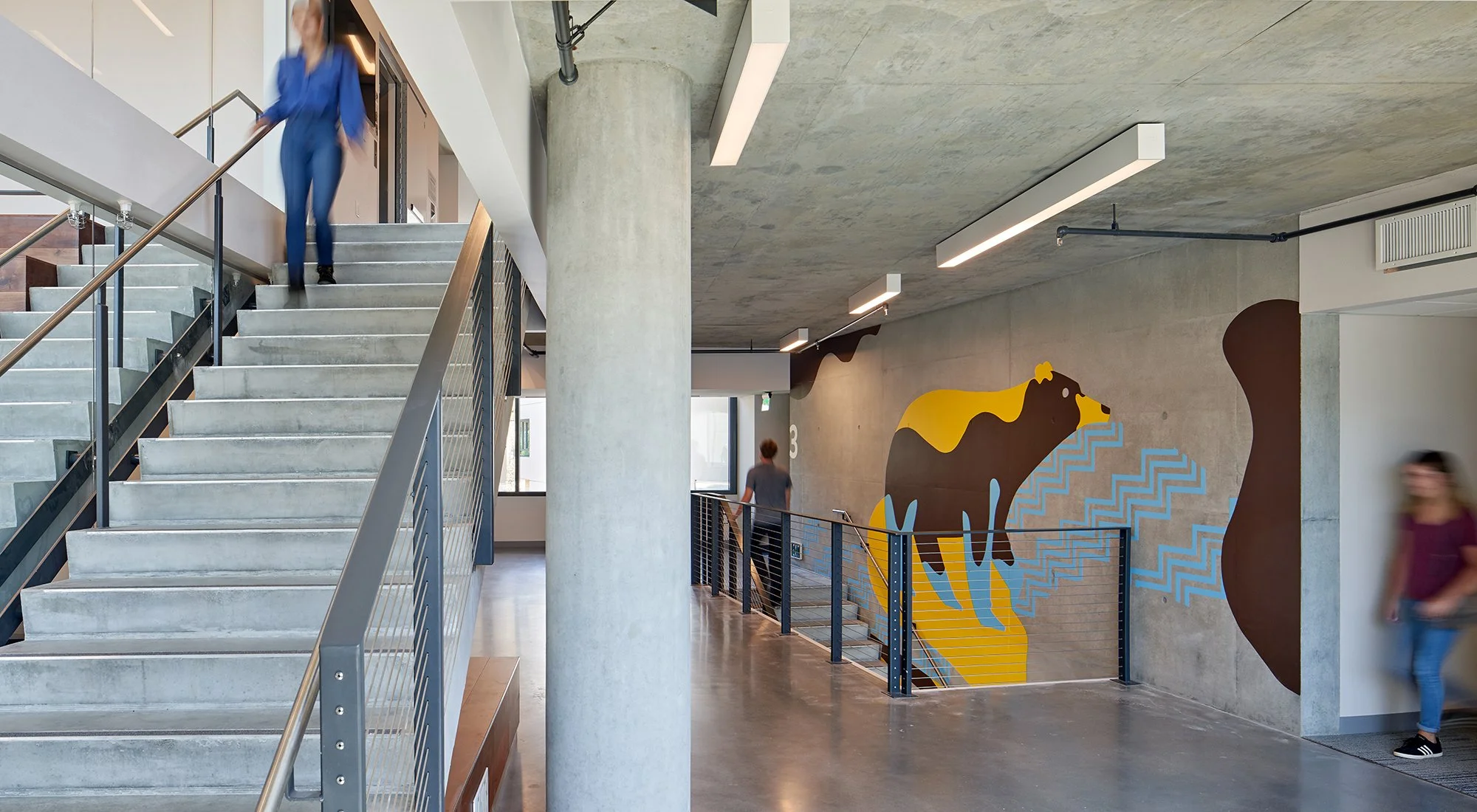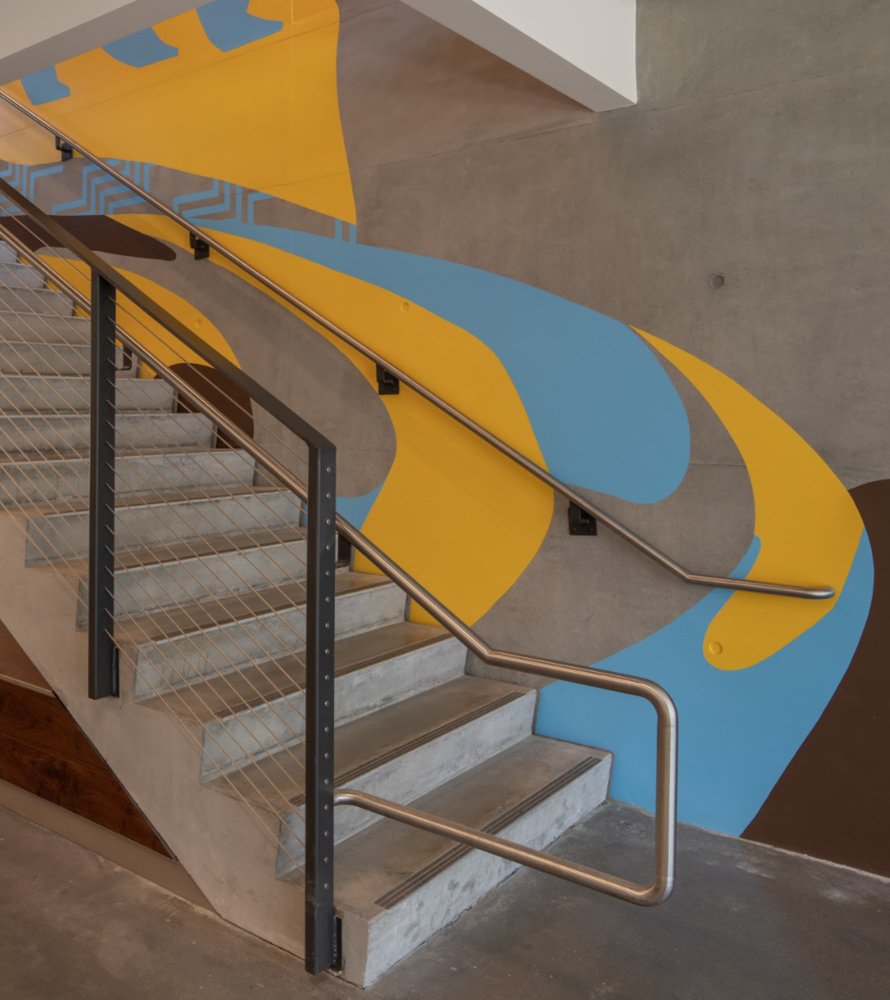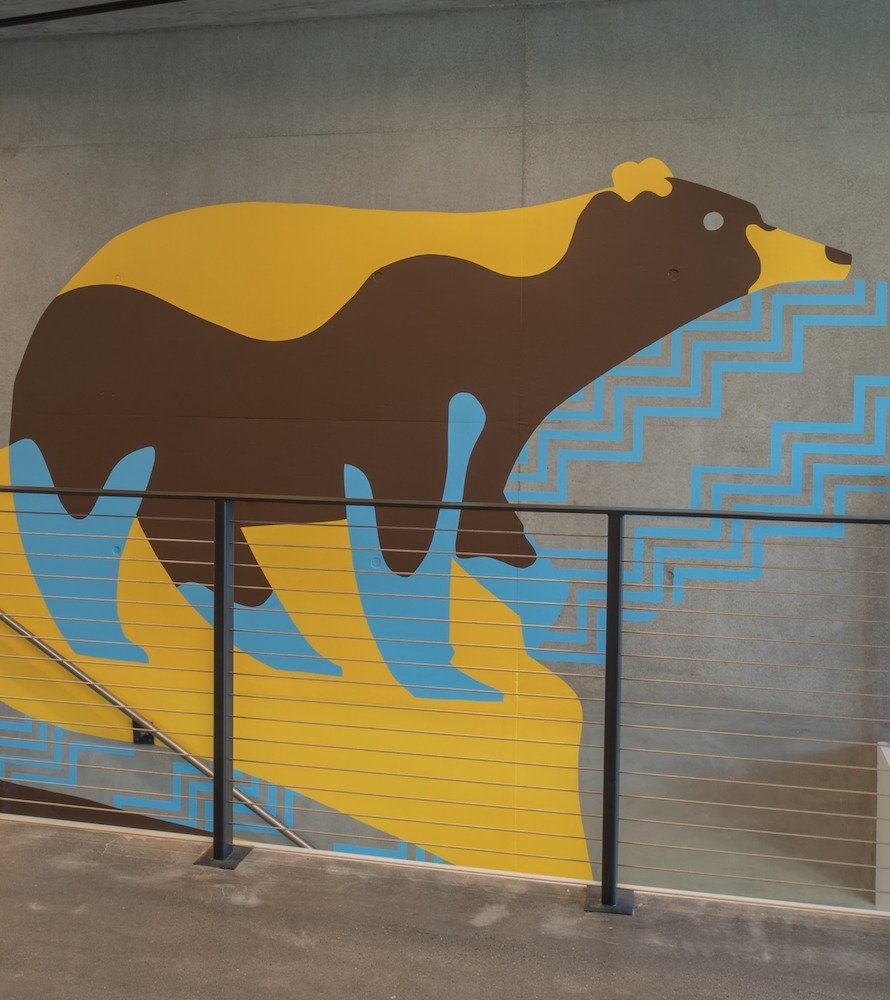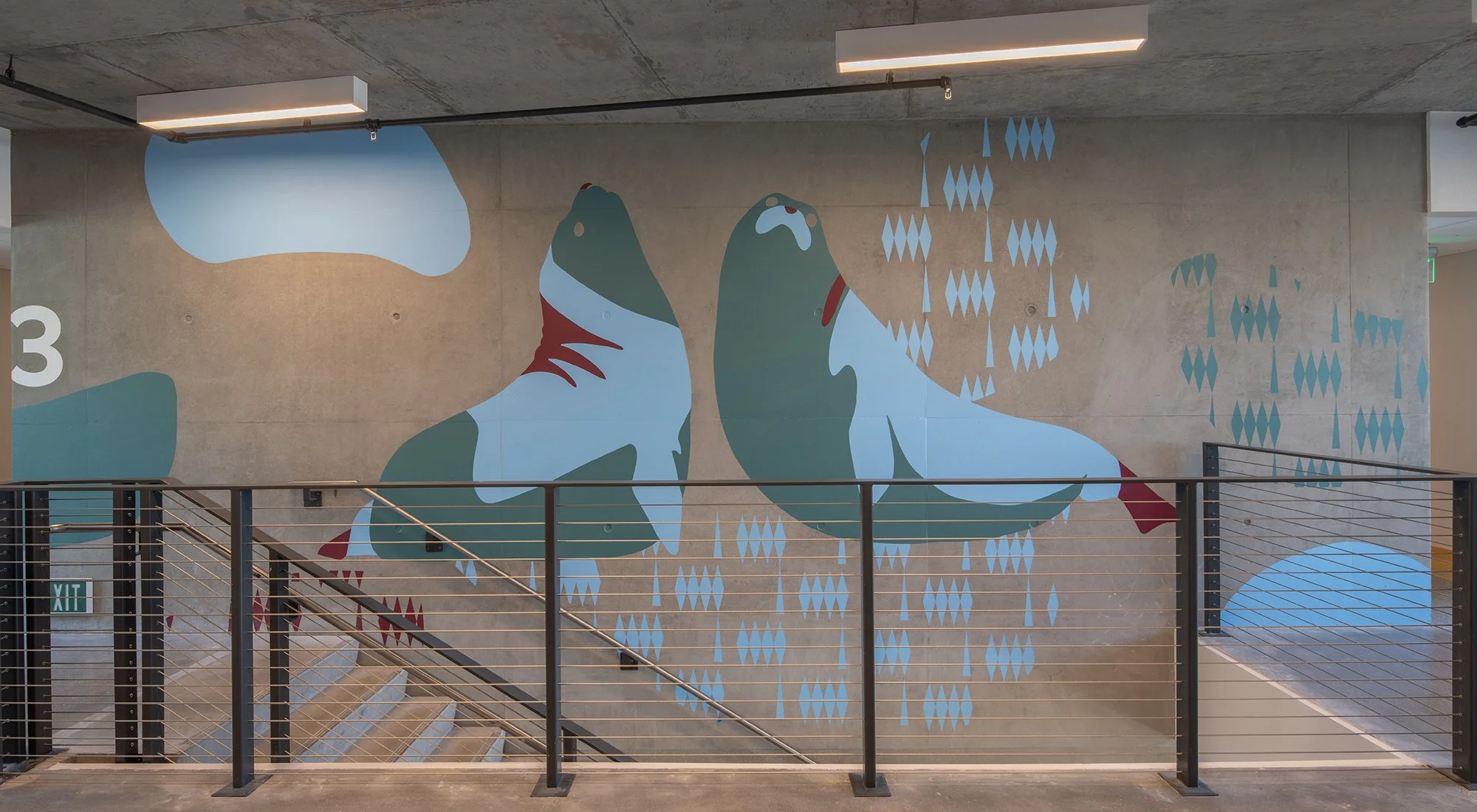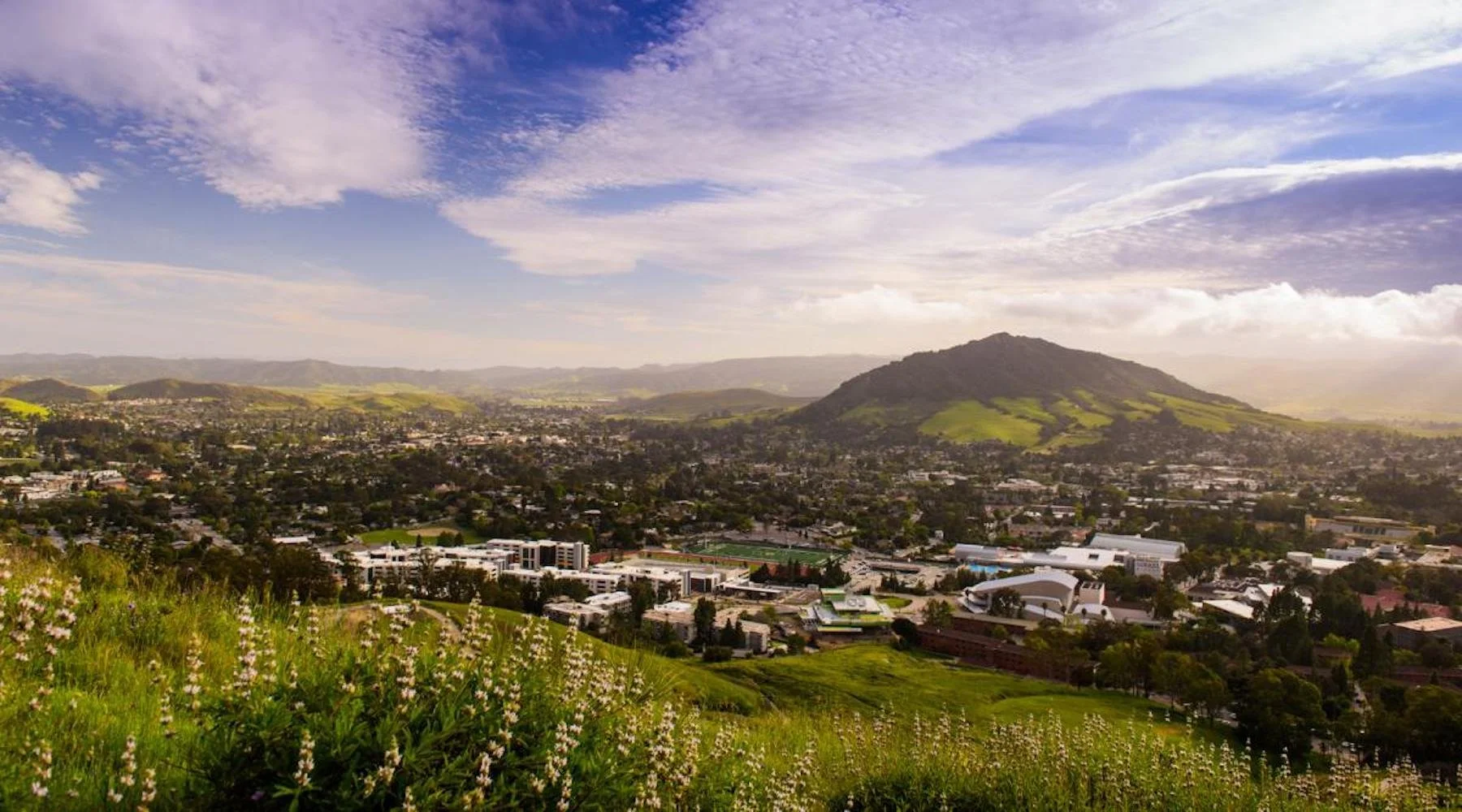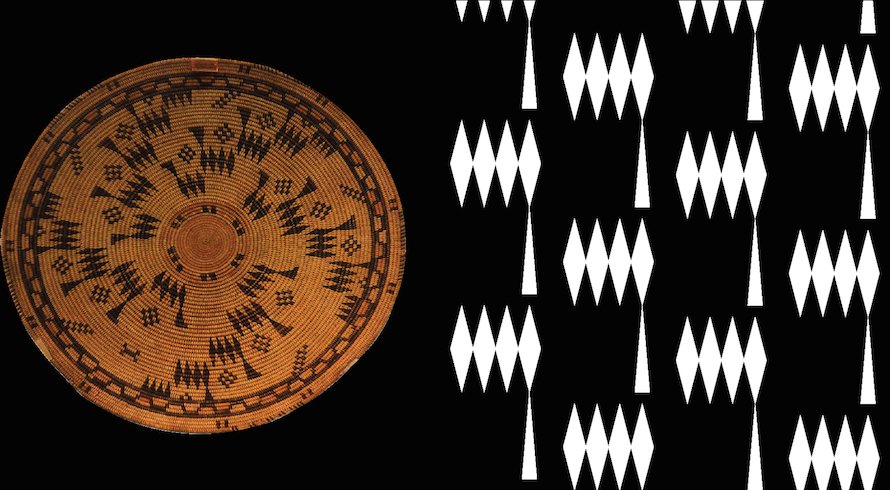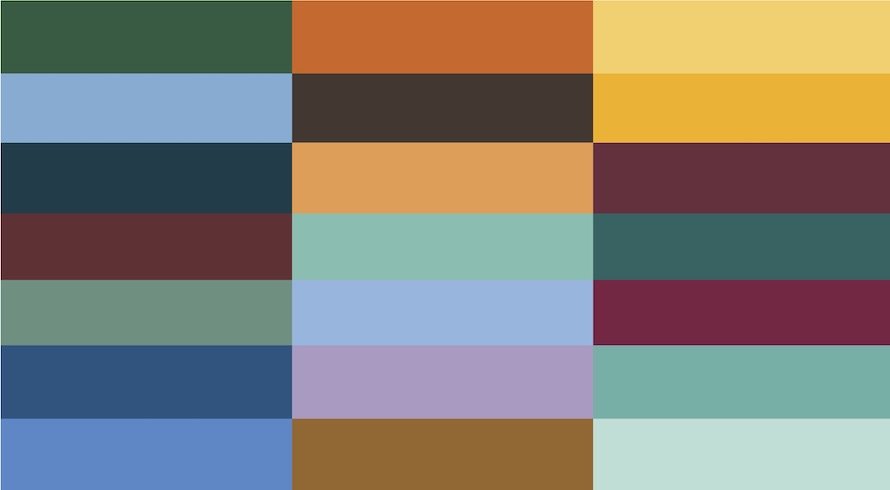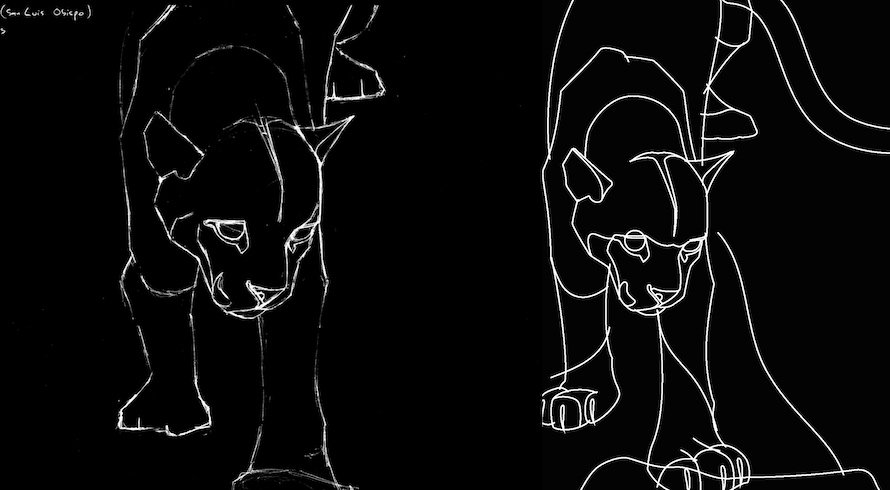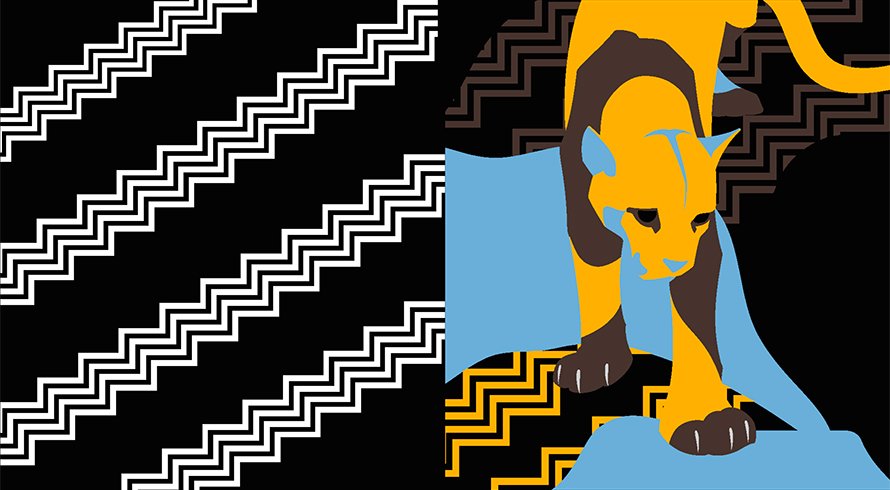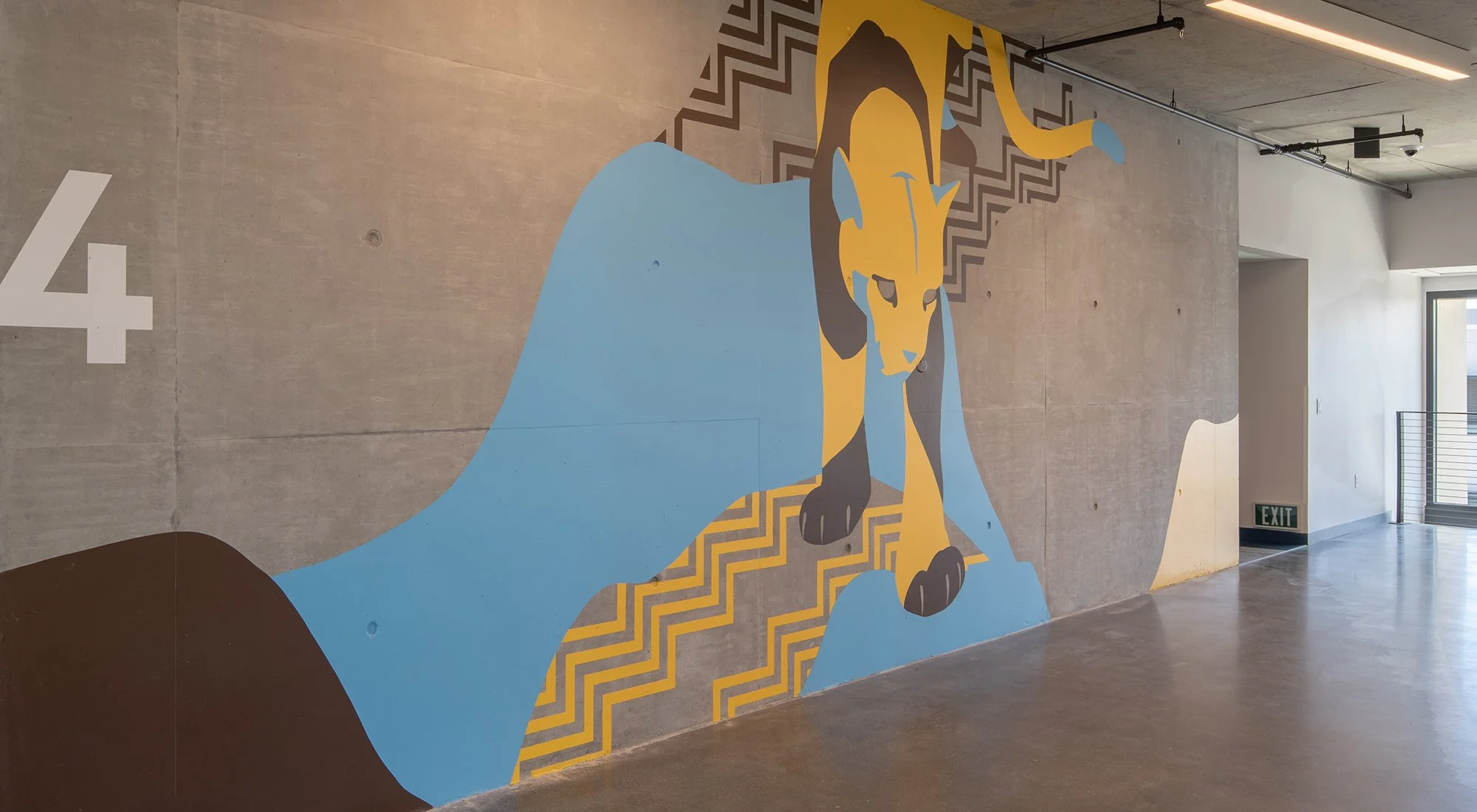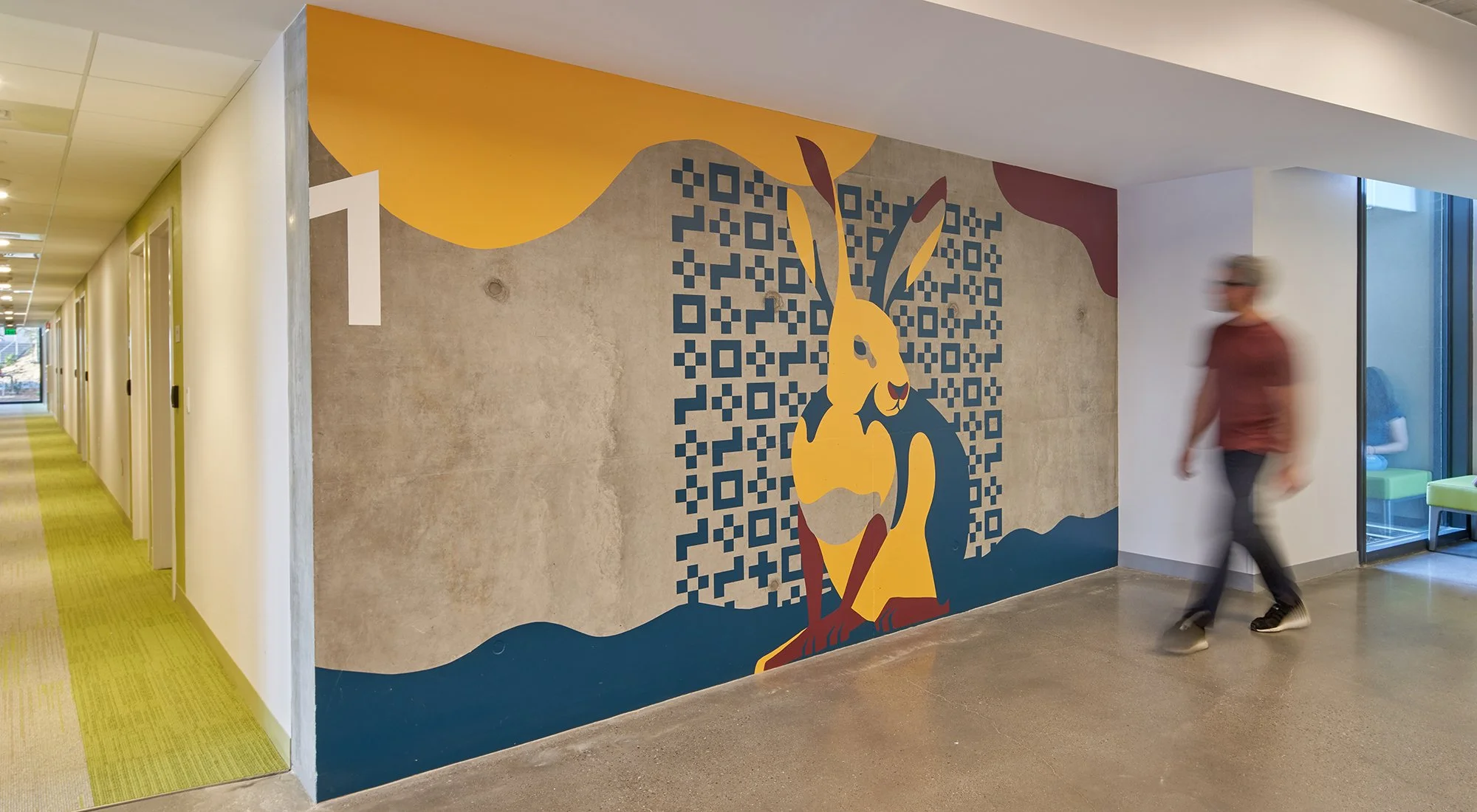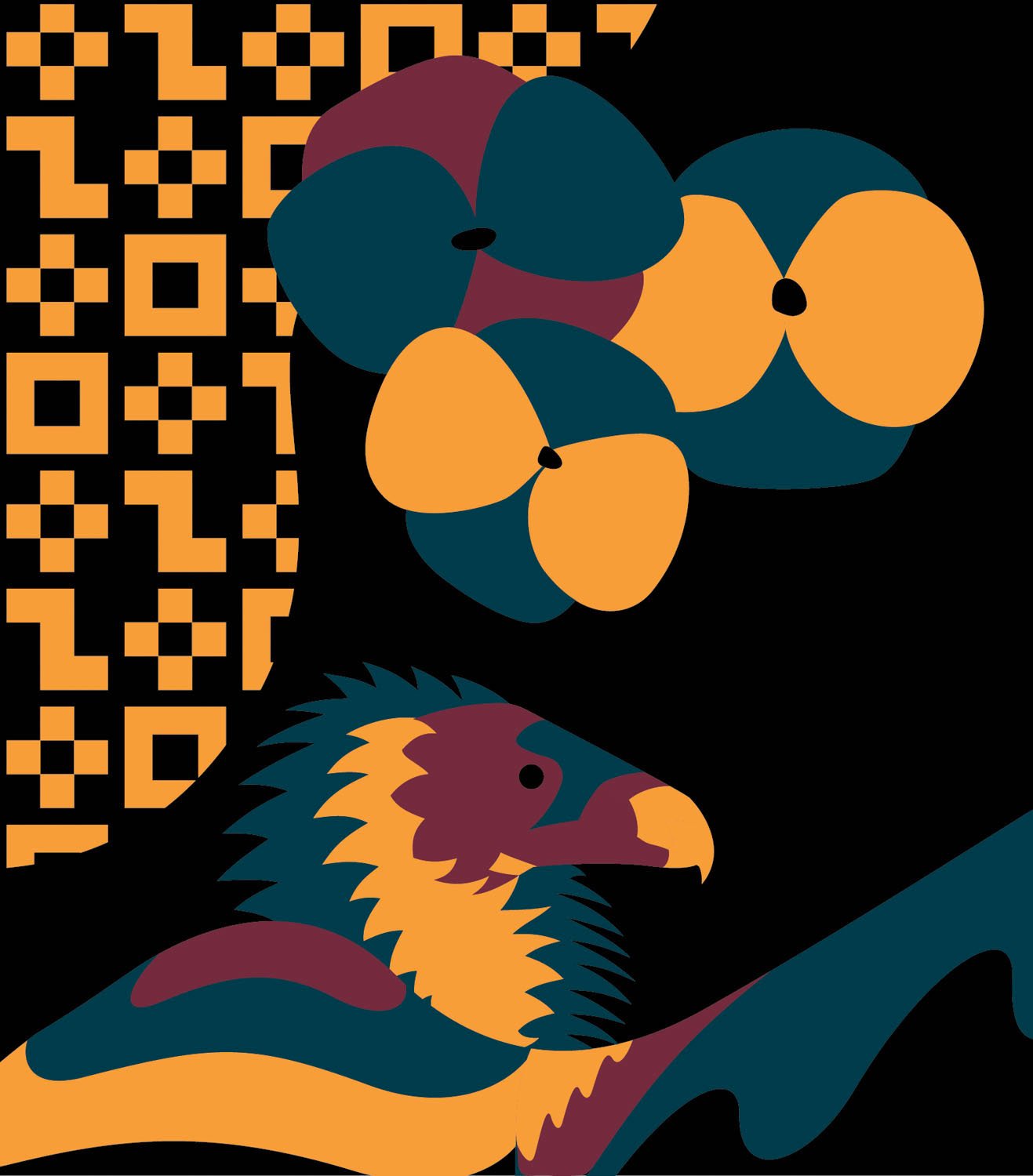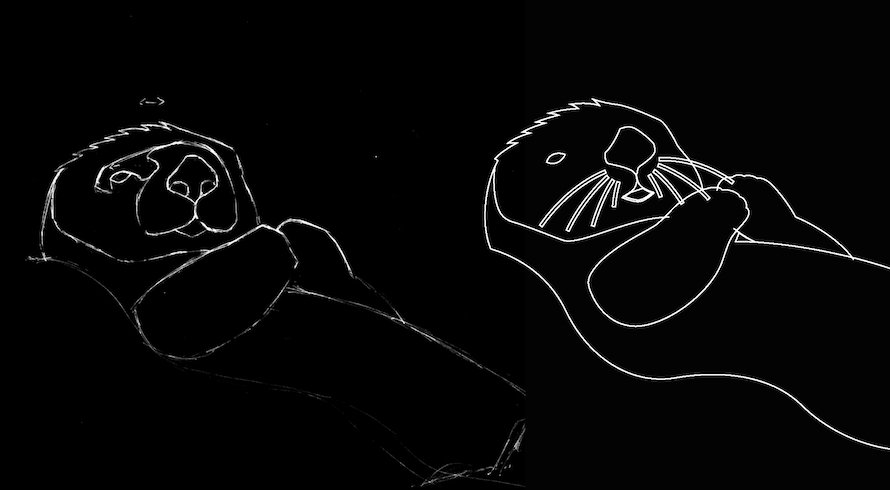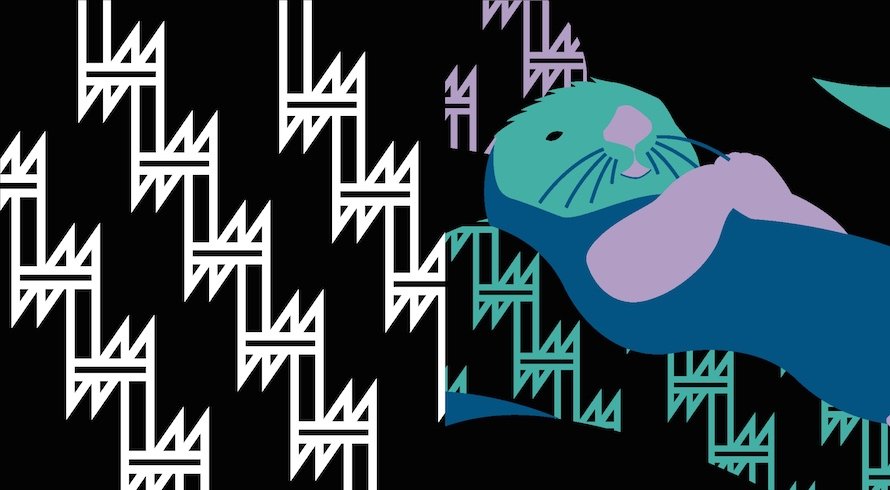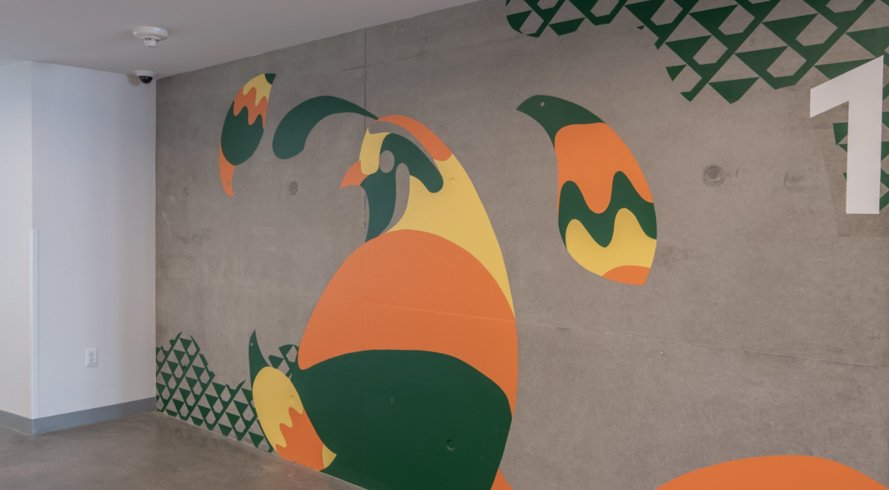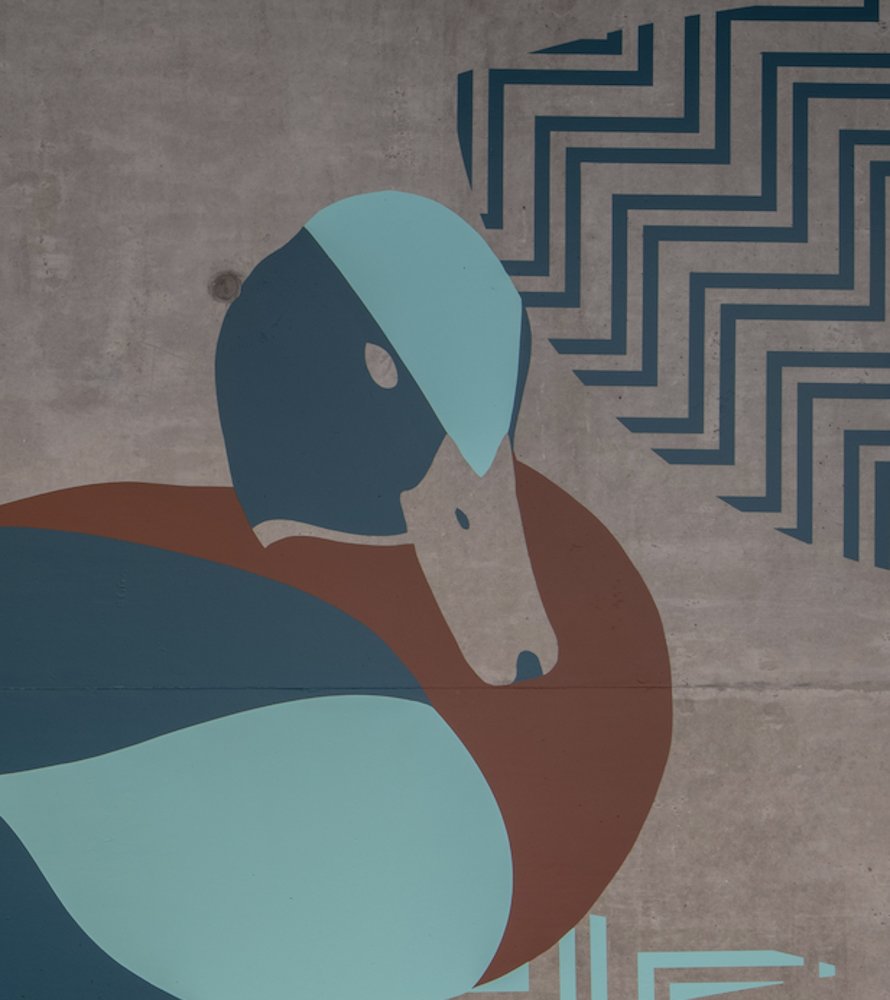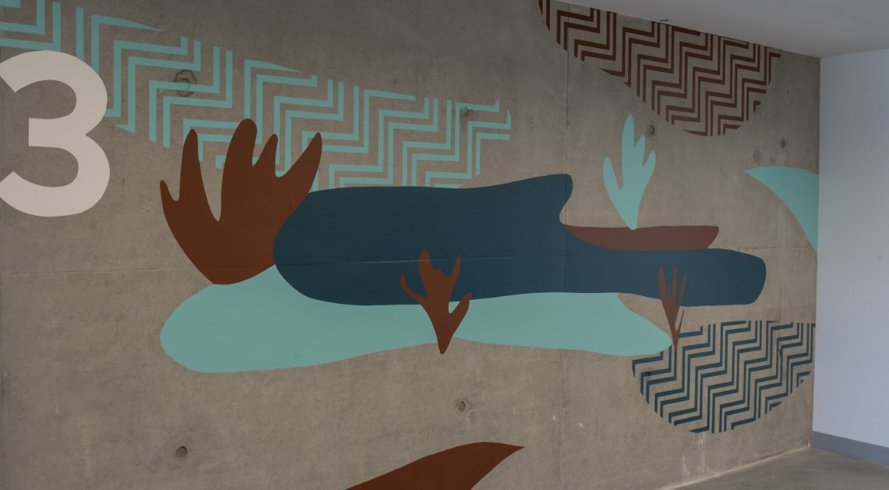Nestled on California’s central coast, Cal Poly’s new residential community for 1,475 first-year university students consists of seven three- to five-story residence hall buildings, a welcome center, and and an adjacent four-level parking structure. The new complex connects students both to each other and to the adjacent residential community.
Monumental architectonic forms contain the living rooms and study spaces, which extend all the way through the buildings and feature expansive glazing to bring in natural light.
The new complex connects students both to each other and to the surrounding community. A deep connection to place comes from a partnership with the local Northern Chumash tribe, yak titʸu titʸu yak tiłhini, to provide direction for creating unique experiential graphics for each of the residence halls.
To tie together all of the wall art in a building, the design team created an abstract pattern for each residence hall, based on yak titʸu titʸu yak tiłhini basket patterns and integrated them as supporting elements within each mural. The environmental graphics for each residence rely on three colors, distinct for each building and chosen based on landscape colors that yak titʸu titʸu yak tiłhini associates with each village.
For example, for building tsɨtkawayu, the main story is “rabbit’s den,” with substories of wildflowers and California poppies, Tule elk and pronghorn antelope, red-tailed hawks and golden eagles, condors, and raptors, and northern harriers.
The goal is for students to discover and build connections, not only to their own residence hall, but also to the yak tityu tityu yak tiłhini people who have and will continue to live in this area for many generations, ultimately increasing students’ respect for the land and its ecosystems, for each other, and for the cultural heritage of the place they will call home.
Cal Poly yakʔitʸutʸu
(Formally: Student Housing South)
Nestled on California’s central coast, Cal Poly’s new residential community for 1,475 first-year university students consists of seven three- to five-story residence hall buildings, and an adjacent four-level parking structure. The new complex connects students both to each other and to the adjacent residential community. A deep connection to place comes from a partnership with the local Northern Chumash tribe, yak titʸu titʸu yak tiłhini, to provide direction for creating unique experiential graphics for each of the residence halls.
The design team worked closely with representatives of yak titʸu titʸu yak tiłhini in two visioning sessions to determine the direction of the artwork. They settled on telling stories, centered around the surrounding landscape of seven yak titʸu titʸu yak tiłhini villages along the Central Coast; focusing on their deep-rooted ties to the land by celebrating local flora and fauna. The group also developed landscape story identifiers to define each of the seven residence halls and also represent each village by name: elewexe, nipumuʔ, tiłhini, tsɨtqawɨ, tšɨłkukunɨtš, tsɨtpxatu, and tsɨtkawayu.
Interior wall art is painted on bare concrete walls to tell each building’s primary landscape story as well as several secondary stories that add depth. For example, for building tsɨtkawayu, the main story is “rabbit’s den,” with substories of wildflowers and California poppies, Tule elk and pronghorn antelope, red-tailed hawks and golden eagles, condors, and raptors, and northern harriers.
Within each building, every floor has its own mural along the main interior circulation path. To tie together all of the wall art in a building, the design team created an abstract pattern for each residence hall, based on yak yak titʸu titʸu yak tiłhini basket patterns and integrated them as supporting elements within each mural. The environmental graphics for each residence rely on three colors, distinct for each building and chosen based on landscape colors that yak tityu tityu yak tiłhini associates with each village. Students from the university’s art department collaborated with a painter and used stencils to hand-paint the murals on the concrete.
As a result of the working relationship with the yak titʸu titʸu yak tiłhini, local plant species were also integrated into the landscape design, according to their recommendations. This was accompanied by localized signage, produced by the design team, that annotates and describes its tribal significance to incoming students. Before the work commenced, the yak titʸu titʸu yak tiłhini tribal team gathered with the design team for final review and approval of the wall art.
The goal is for students to discover and build connections, not only to their own residence hall, but also to the yak titʸu titʸu yak tiłhini people who have and will continue to live in this area for many generations, ultimately increasing students’ respect for the land and its ecosystems, for each other, and for the cultural heritage of the place they will call home.
Location
San Luis Obispo, California
Services
Placemaking
Wayfinding
Research
Murals
Environments
Awards
Honoree-Branding + Graphics, Interior Design
Notable-Visual Communication, Core77
Merit-Placemaking, SEGD
Citation, AIA Silicon Valley
Student Housing, Multi Housing News
Live Category, IIDA NorCal
Photography
Bruce Damonte
Francisco Lopez de Arenosa
Partners
Chumash Tribe
Webcor Builders
Architecture by
Valerio Dewalt Train


